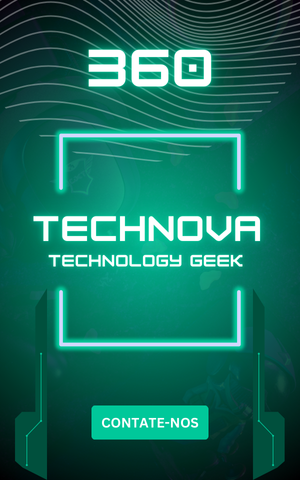In today’s digital world, how we talk to each other has changed a lot. This is thanks to quick progress in predictive text and AI keyboards. These new tools make typing easier and change how we share our thoughts, both at home and at work.
Predictive text uses AI to guess what we’ll type next. It looks at what we’ve typed before and the message’s context. This makes typing faster and easier, from our phones to emails.
The journey of predictive text has been amazing. It started with simple T9 systems and now uses advanced AI. These tools learn our writing style and what we like to say. They get better at guessing what we mean, thanks to AI and natural language processing.
Key Takeaways
- Predictive text technology uses AI to guess the next word based on what we’ve typed before.
- The evolution of predictive text has moved from simple T9 systems to advanced AI keyboards.
- Predictive text makes writing easier by guessing words, adapting to our style, and fixing mistakes.
- It’s used in many places, like phone keyboards, word processors, and even for translating languages.
- This technology is set to make talking and writing more natural and creative.
Understanding the Evolution of Predictive Text Technology
Predictive text technology has changed a lot. It started with T9 systems and now we have AI-powered smart keyboards. These new tools make typing easier and more accurate, fitting how we write.
From Basic T9 to Advanced AI Systems
At first, we used T9 on phones. It was simple but worked well. Later, systems like iTap and eZiText came along, making typing even better.
Then, machine learning and natural language processing changed everything. AI-powered keyboards now understand us better. They learn our writing habits and suggest words that fit what we mean.
The Role of Machine Learning in Text Prediction
Machine learning is key to today’s predictive text. It looks at lots of texts to learn how we write. This helps keyboards correct our mistakes and suggest better words.
Development of Smart Keyboards
Smart keyboards got smarter with machine learning. They can now correct our typing, suggest words, and even help with grammar. This makes writing easier and more fun.
| Evolution of Predictive Text Technology | Key Advancements |
|---|---|
| T9 (Text on 9 keys) | Simple numeric keypad-based system |
| iTap, eZiText, LetterWise/WordWise | Improved accuracy and user experience |
| AI-powered Smart Keyboards | Leveraging machine learning and natural language processing for context-aware predictions, personalization, and advanced features |
Today’s predictive text is a big leap from T9. Thanks to AI, typing is smarter and more personal. This change helps us write better and faster.
The Science Behind AI-Powered Text Prediction
The tech behind today’s predictive text and AI keyboards is based on natural language processing and contextual language models. These systems use artificial intelligence to look at lots of language data. They find patterns and guess the next words or phrases a user might type.
Machine learning algorithms are at the core of this tech. They can understand context, come up with ideas, and even write like humans. For instance, GPT-3 can get what a user means and suggest relevant text.
Creating complex data structures, like “tries,” is key to these systems. They help store and find predictive text or auto-complete dictionaries. By studying user behavior and language patterns, these systems get better at suggesting text that fits each user’s style.
The better natural language processing gets, the more accurate and helpful AI text prediction becomes. As these technologies grow, we’ll see even better text input. This will make communication smoother and more efficient.
How Predictive Text and AI Keyboards Are Changing Communication
Predictive text and AI keyboards are changing how we talk online. They make our writing faster and more personal. This is true for work, social media, and everyday chats.
Impact on Daily Digital Interactions
These smart tools learn how we type and offer suggestions as we write. They help us type faster by up to 50%. This is especially helpful for those using phones, where speed matters.
Transformation of Professional Communication
At work, these tools cut down on typos by 25%. This makes emails and reports better and faster. It helps professionals work more efficiently.
Social Media and Messaging Evolution
On social media, predictive text lets us share more clearly. It suggests words based on how we write. This makes our messages better and faster, improving our online chats on Facebook, Twitter, and WhatsApp.
| Key Metrics | Impact of Predictive Text and AI Keyboards |
|---|---|
| Typing Speed | Increased by up to 50% |
| Reduction in Typographical Errors | 25% decrease |
| Data Volumes Processed | Over 1 terabyte of language data daily |
| Multilingual Support | Seamless switching between multiple languages |
| Personalization Rate | Over 80% personalization to individual user habits |
Predictive text and AI keyboards are changing how we talk online. They make our writing better and faster. They help us share more clearly and personally.

Advanced Features of Modern AI Keyboards
In the world of digital communication, AI keyboards are changing how we use our devices. They offer more than just basic autocomplete. They have advanced features that make our experience better.
One key feature is intelligent word suggestions. These keyboards use machine learning to guess what you might type next. They look at your writing style and what you’re trying to say. This makes typing faster and helps you write more clearly.
AI keyboards also excel at autocomplete. They guess your next words and phrases very well. This makes typing quicker and helps avoid mistakes, making your experience better.
But there’s more. Modern AI keyboards are exploring new features. They can create creative ideas, do research on the fly, and even help write content. The future looks bright with these technologies.
Looking ahead, AI keyboards are leading the way in digital communication. They adapt to how you write, correct mistakes, and improve grammar. These smart tools are changing how we use our devices and talk to each other.
Natural Language Processing in Predictive Text Systems
Natural Language Processing (NLP) is changing how we talk through predictive text systems. These systems use NLP to get the context, what the user means, and language patterns. They give us more accurate and personal text suggestions.
Understanding Context and User Intent
Predictive text systems with NLP can understand language’s subtleties. They look at the context, figure out what the user wants, and suggest words and phrases. This makes talking to devices feel natural and smooth.
Semantic Analysis Capabilities
At the core of these systems is semantic analysis. It helps understand the real meaning of words and phrases. With advanced NLP, these systems can grasp the feelings and connections between language elements. This lets predictive text give us more relevant and useful suggestions.
Language Pattern Recognition
Predictive text systems use machine learning to learn about our writing styles. They analyze what we type over time to get to know us better. This way, they suggest words and phrases that fit how we like to write.
NLP in predictive text systems is a big step forward in digital communication. They understand context, interpret meaning, and recognize patterns. This makes our interactions with devices and each other better, more personal, and easier to understand.
Privacy and Security Considerations in AI Keyboards
AI-powered keyboards are becoming more common in our digital lives. They collect and analyze user data, including personal info, to improve text prediction. This raises concerns about how this data is stored, sent, and used.
It’s important for users to know how their data is used by keyboard apps. Strong encryption and data protection are key to keeping personal info safe. Techniques like Federated Learning help protect user data by keeping it on devices.
Big tech companies like Google and Apple are working on these issues. Google’s Gboard uses Federated Learning to improve text predictions while keeping data private. Apple’s Intelligence feature on iOS 18.1 processes requests locally, then deletes the data.
Independent researchers check if AI keyboards keep their promises about privacy. Users should be able to see their data and turn off features they don’t like.
As AI becomes more part of our communication tools, privacy and security must be a top priority. By balancing tech advancements with user trust, AI keyboards can make our digital lives better while keeping our data safe.
| Feature | Benefit |
|---|---|
| Federated Learning | Enables machine learning models to be trained across multiple devices without the data leaving those devices, improving privacy and security. |
| Secure Enclave and Secure Boot | Cloud security features that ensure data protection and code verification for servers supporting AI keyboard services. |
| User Activity Report | Allows users to review and export their activity data for personal inspection and control. |

“As AI-powered keyboards become increasingly prevalent, it’s crucial that privacy and security remain at the forefront of product development.”
The Role of User Data in Improving Predictions
User data is key to making predictive text systems better. These AI tools learn from how we type and what we write. They get to know our writing style, making their suggestions more accurate and personal over time.
Learning from User Behavior
Predictive text algorithms watch how we interact with them. They learn our typing habits, favorite words, and sentence patterns. This helps them understand how we like to communicate, making their suggestions more tailored to us.
Personalization Algorithms
Personalization is at the core of today’s predictive text systems. AI tools use complex algorithms to analyze our data. As they learn more about our writing, they get better at suggesting text that fits our style.
Adaptation to Writing Styles
Predictive text technology adapts to our writing style. It studies our text input to predict our preferred phrasing and tone. This makes the suggestions feel more natural and personal, improving our experience.
| Feature | Benefit |
|---|---|
| Learning from User Behavior | Develops a deeper understanding of individual typing patterns and word choices to provide more relevant suggestions |
| Personalization Algorithms | Analyzes user data to create personalized language models, refining predictions over time |
| Adaptation to Writing Styles | Learns the user’s preferred phrasing, tone, and formatting to enhance the predictive text experience |
But, collecting so much data raises big privacy concerns. As these systems get better, finding the right balance between personalization and privacy will be a big challenge.
Impact on Language and Writing Skills
Predictive text and AI keyboards are changing how we write and communicate. They make typing faster and cut down on mistakes. But, they might also hurt our spelling and grammar skills.
There’s a problem called “character amnesia.” People who use predictive text a lot might forget how to write certain words by hand. This can make their language skills and writing abilities get worse.
But, these tools can also introduce us to new words and help us write better. They suggest words and phrases that might not be our first choice. This can make us think more about what we write.
| Impact on Language Skills | Impact on Writing Abilities |
|---|---|
|
|
As AI tools get better, finding a balance is key. We should use predictive text to our advantage. But, we also need to keep our language skills and writing abilities sharp. This will help us keep up with the changing world of communication.

“The overreliance on predictive text and AI keyboards could lead to a concerning decline in manual writing skills, but these technologies also offer opportunities to enhance communication when used mindfully.”
Integration with Professional Writing Tools
AI technology is changing how we write. It’s making professional writing tools better. These tools help us write faster and more accurately.
Enterprise Applications
AI is a big help for businesses. It makes writing tasks like technical reports and legal documents easier. It also keeps the writing style consistent with the company’s brand.
Productivity Enhancement Features
AI in writing tools makes us more productive. It suggests grammar and style changes and formats documents automatically. Studies show AI can make technical writing 25% more efficient.
Collaborative Writing Capabilities
AI helps teams write together better. It lets everyone work on documents at the same time. This makes writing projects smoother and faster.
| AI-Powered Writing Tool | Key Features | Applications |
|---|---|---|
| Grammarly | Grammar, spelling, and style suggestions | General writing tasks, content creation |
| ChatGPT | Advanced text generation, research capabilities | Creative writing, ideation, report generation |
| Scrivener | Project management, formatting, and outlining | Long-form writing (e.g., novels, research papers) |
| ProWritingAid | Comprehensive writing analysis and feedback | Copywriting, content editing, academic writing |
AI is making writing tools more important. They help us communicate better, work faster, and write together more easily.
Future Trends in AI-Powered Communication
AI technology is changing fast, and so is how we talk to each other. Advancements in AI communication will bring better language models and understanding. We might even see ways to turn thoughts into text directly.
AI and human creativity are teaming up more. AI will help create longer, more complex ideas while keeping them original. This mix of human and machine will change how we share ideas and express ourselves.
Future AI communication will also get more personal. It will learn our writing styles and preferences. This means our digital chats will be more tailored and efficient, helping us work better in many areas.
The focus of AI-powered communication is to help us, not replace us. It aims to use technological advancements to make us better at connecting and creating. This will open up new ways for us to communicate and be creative.
“The future of AI-powered communication is not about replacing humans, but about enhancing our abilities to connect, express, and innovate in unprecedented ways.”
As communication evolves, AI will play a big part. It will combine human creativity with machine smarts. This will lead to a future where we can express ourselves, work together, and be more productive in new ways.
Conclusion
AI keyboards and predictive text are changing how we talk and write online. They make typing faster and more accurate. They also help us communicate in many languages easily.
But, these new tools also bring challenges. We worry about privacy and biases. We also fear losing skills in spelling and grammar.
It’s important to find a balance between human creativity and AI help. This way, we can use technology to make our communication better. We should aim for a future where AI makes our conversations richer, not less.






